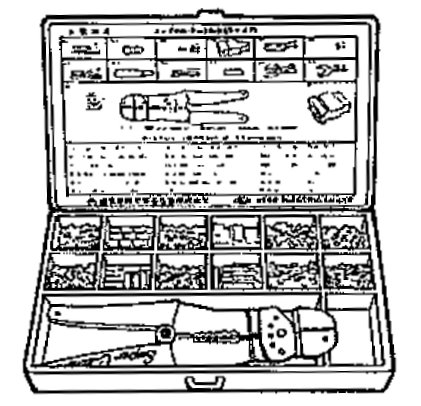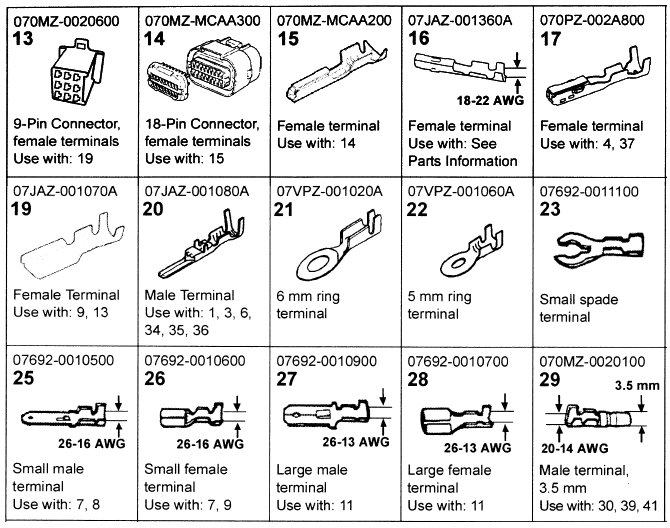  ® ®
|
The Electrical Connectors Scandal |
|
Honda, like other manufacturers, has changed their electrical connectors to keep up with the increasing demands of their vehicle's electrical systems. The earliest connectors were not very much different from their pushrod Brit counterparts (and original design models) -- bullets, spades, ring terminals and the almost ubiquitous white or black colored rectangular plastic ("canon" or "block") connectors containing between two to eight conducting terminals. These of course evolved through a couple more stages, ultimately culminating in what is used currently, automotive euro (DIN) style waterproof connectors having rubber seals and tightly locking connections. The rubber seals are a hedge against the intrusion of moisture that could interfere with today's much more delicate computer-controlled circuits.
The old canon style connector blocks were open-backed and thus their internal terminals were prone to corrosion and heavy oxidation. So prone to problems were these old style connectors that fully 80 percent of vintage bike electrical issues can be traced to issues with these connectors. Ideally, proper, best-practice repair includes extracting each terminal and soldering its terminal-to-wire junction, then rebuilding the block and before reconnecting the two halves, filling them with dielectric grease that will more or less do the same job as the rubber seals in the newer style connectors.
Lately a lot of websites have sprung up, offering the terminals and the rectangular blocks for sale. This is a boon to those of us in the vintage community. What is little-known however is that Honda has these same parts and always has. They made these parts available from the very beginning--they were listed in the 1960s, 1970s, and 1980s factory tool catalogs, and later in bulletins such as tools bulletin STN #11, Revised February 2011. And Honda continues to make them available today. That is, you can get them through any Honda dealer. Not to mention any Suzuki dealer--for example see Suzuki's 2011 tool catalog, publication 99923-06892-006. Same parts. Kawasaki, like Honda, Suzuki and Yamaha, long had them available also, but in the past few years has discontinued them. Yamaha may have discontinued them by now also, but Honda and Suzuki definitely are still in the electrical terminal business, still supplying both old-school terminals and their connecting blocks.
You probably didn't know Honda dealers could get these parts. There are two reasons why this isn't better known. First, even authorized Honda (and other Japanese OEM) dealers assume they know better than to use factory terminals, so they don't keep up on what is available. In this regard they make the same mistake that many independent repair shops make. They instead, in the rare event they feel they need them, source electrical connectors from Wurth or K&L or the local hardware store. Argh! So when you do ask a Honda dealer for an electrical terminal part, since they don't use it in their shop, they naturally have to order it. The second surprise comes when they actually order the terminal, for Japanese OEMs sell them to their dealers only in multiples of five or ten or 25. The dealer, who does not use these parts and has therefore no interest in stocking them, will insist you pay for all of the shipment, not just the one or two you need. Or, as is often the case, he will pretend they are not available. That's if his staff knows about them to begin with.
Fortunately, many online sources have sprung up so the average person can buy just one or two or three, and not the whole bag of these vintage 1960s through 1980s) factory Honda electrical connectors. Following are just a few of these outlets.
www.easternbeaver.com |
© 1996-2021 Mike Nixon

